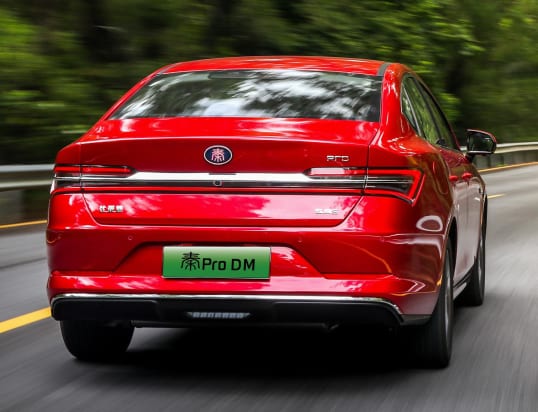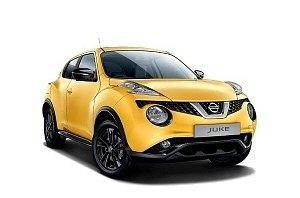
Presented by Lotus Evija 2020
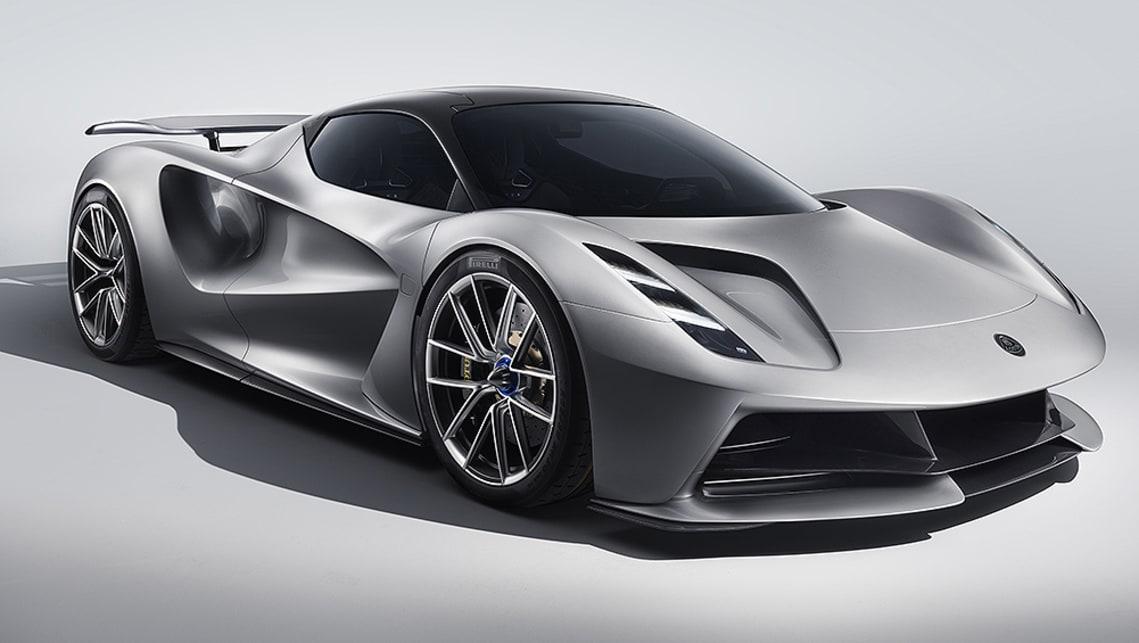
Lotus says the Evija hypercar will generate 1470kW and 1700Nm of power from four electric motors.
Lotus has officially unveiled its first all-electric model, the Evija, calling the 1470kW hypercar "the most powerful production road car ever made."
Production will begin next year at the brand's Hethel plant, with just 130 units available starting at £1.7m ($2.99m).
Lotus made big claims, listing a power target of 1470kW/1700Nm and a curb weight of just 1680kg in the "lightest spec". If these numbers are correct, the Evija will have every chance of entering the market as the lightest mass-produced EV hypercar and, indeed, the most powerful road car.
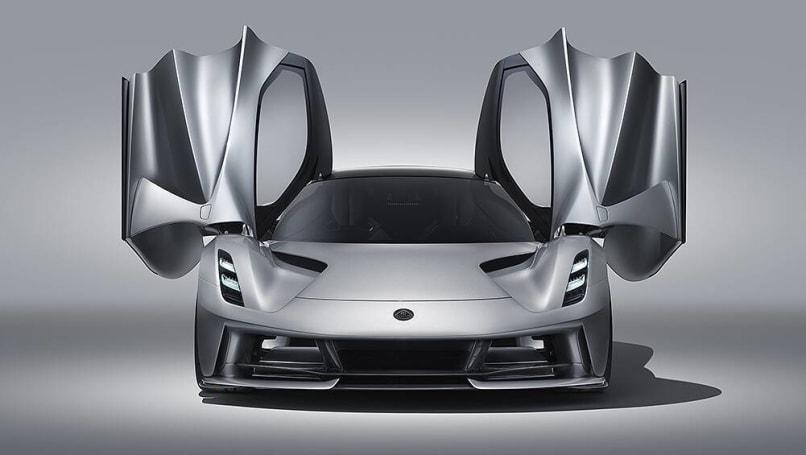 In the absence of traditional handles, the Evija doors are controlled by a button on the key fob.
In the absence of traditional handles, the Evija doors are controlled by a button on the key fob.
The Evija is the first all-new vehicle launched by Geely, which bought a majority stake in Lotus in 2017 and now owns other manufacturers including Volvo and Lynk&Co.
It is also the first full carbon fiber monocoque of its kind to feature a 70kWh lithium-ion battery behind two seats, powering four electric motors at each wheel.
Power is managed by a single-speed gearbox and transferred to the road via torque distribution across all legs.
 The Evija rides just 105mm off the ground, with large magnesium wheels wrapped in Pirelli Trofeo R tires.
The Evija rides just 105mm off the ground, with large magnesium wheels wrapped in Pirelli Trofeo R tires.
When connected to a 350kW fast charger, the Evija can be charged in just 18 minutes and can travel 400 kilometers on pure electric power on the WLTP combined cycle.
The automaker also predicts that the Evija will accelerate from zero to 100 km/h in less than three seconds and reach a top speed of over 320 km/h, however these figures are yet to be verified.
On the outside, the British hypercar uses a contemporary design language that Lotus says will be reflected in its future performance models.
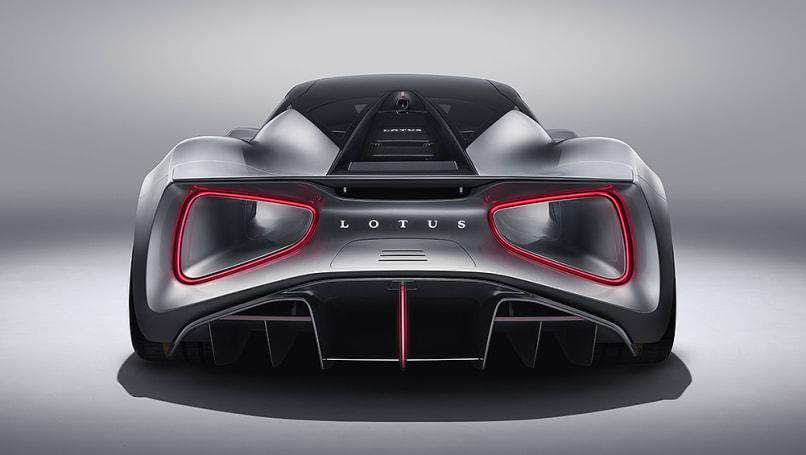 The LED taillights were designed to resemble the afterburners of a fighter jet.
The LED taillights were designed to resemble the afterburners of a fighter jet.
The all-carbon-fibre body is long and low, with pronounced hips and a teardrop-shaped cockpit, as well as large venturi tunnels that run through each hip to optimize aerodynamics.
Introduced are 20 and 21-inch magnesium wheels front and rear, wrapped in Pirelli Trofeo R tires.
Stopping power is provided by AP Racing forged aluminum brakes with carbon-ceramic discs, while the suspension is controlled by integrated cushions with three adaptive spool dampers for each axle.
To improve airflow, a unique two-plane front splitter provides cool air to the battery and front axle, while the absence of traditional exterior mirrors helps reduce drag.
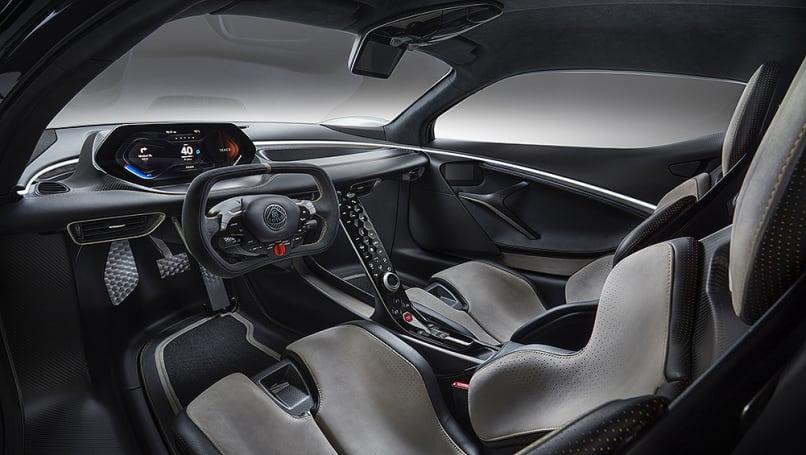 Despite racing car performance, amenities such as sat-nav and climate control are standard.
Despite racing car performance, amenities such as sat-nav and climate control are standard.
Instead, cameras are built into the front fenders and roof, which feed live feeds to three interior screens.
Evija is entered through two handleless doors that open with a key fob and close with a button on the dashboard.
The carbon fiber treatment continues in the cabin, with lightweight Alcantara-trimmed seats and a thin metal trim embossed with "For Drivers" lettering.
 Interior functions can be controlled via a ski-slope-style floating center console with tactile feedback touch buttons.
Interior functions can be controlled via a ski-slope-style floating center console with tactile feedback touch buttons.
The square-shaped steering wheel gives access to five driving modes; Range, City, Tour, Sport and Track, and a digital display shows vital information including battery power and remaining range.
“At the heart of the appeal of any Lotus is that the driver is constantly in sync with the car and almost feels like wearing it,” said Lotus Cars Design Director Russell Carr.
“Looking from behind the wheel, it's a wonderfully emotional moment to see the body from the outside, both front and rear.
"This is something we hope to improve on future Lotus models."
Order books are now open, however an initial deposit of £250 (AU$442,000) is required to secure the device.
Are we looking at the fastest all-electric hypercar? Tell us your thoughts in the comments section below.
